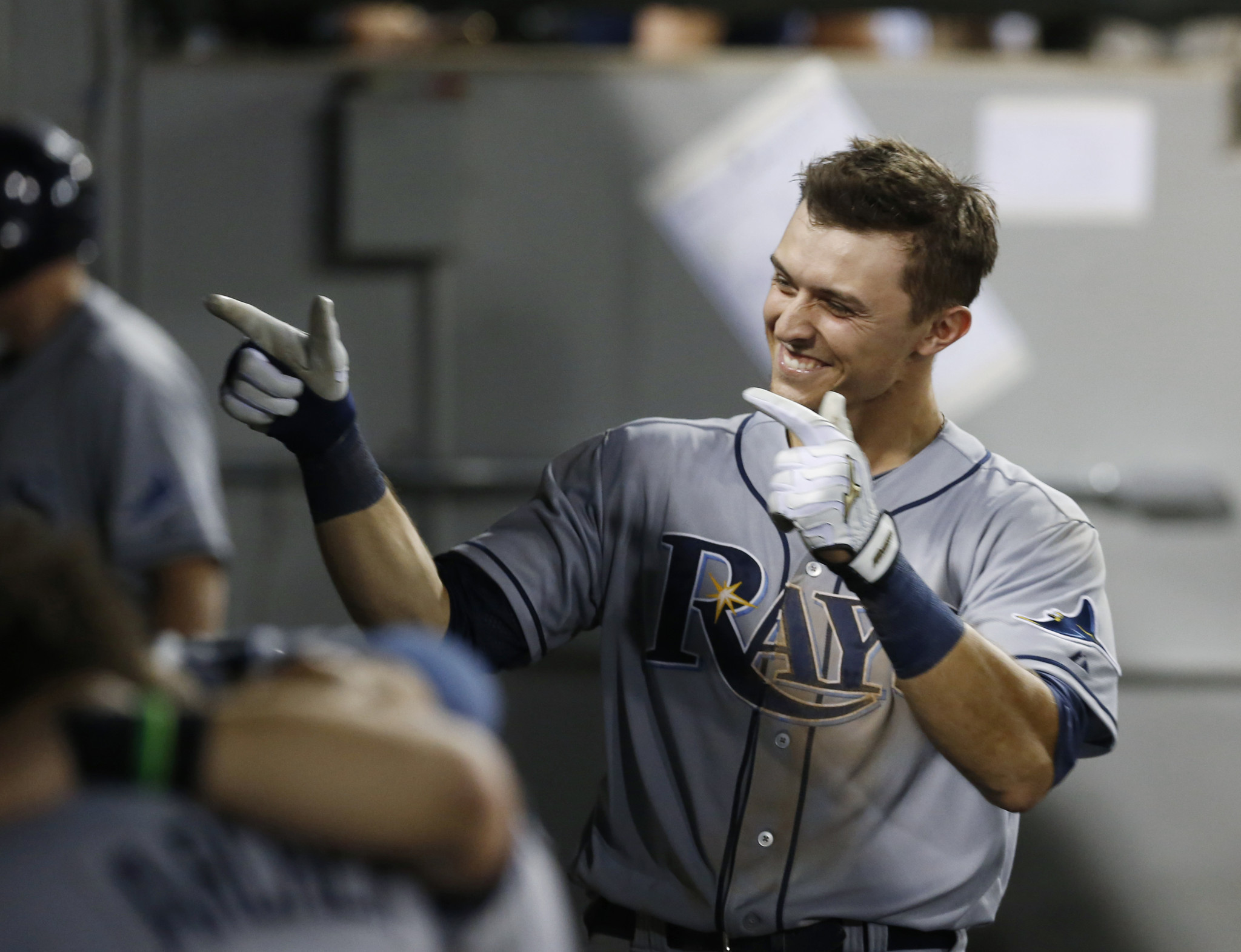
The Tampa Bay Rays have traded 1B/3B Richie Shaffer and utility player Taylor Motter to the Mariners in exchange for three minor league prospects: 1B Dalton Kelly, and RHPs Andrew Kittredge and Dylan Thompson.
The #Rays have acquired 1B Dalton Kelly & RHPs Andrew Kittredge & Dylan Thompson from SEA for INF/OF Taylor Motter & INF Richie Shaffer.
— Tampa Bay Rays (@RaysBaseball) November 19, 2016
The move cleared two roster spots, allowing the team to add two prospects (LHP Jose Alvarado, RHP Hunter Wood) to the 40-man roster to protect them from the Rule-5 Draft in December — bringing the total number of prospects added in the last two days to eight.
It was the first deal made by new Rays senior VP of baseball operations and general manager Erik Neander, who was promoted to his current position on November 4.
Here’s information on the three prospects Tampa Bay received, none of which are MLB ready at the moment (Credit: Kyle Glaser of Baseball America):
Dalton Kelly
Kelly opened the 2015 season as UC Santa Barbara’s starting first baseman but had his season cut short by a fractured fibula in April. He still tied for the team lead in home runs when the season was out and had the most defensive chances in the Big West Conference without an error at the time he went down. That was enough for the Mariners to take him in the 38th round, and Kelly has rewarded them with strong performance on at the plate, in the field, and on the basepaths. He ranked among the Midwest League leaders in runs, doubles, total bases and OPS in his first full season, stole 21 bases, and posted a .991 fielding percentage. Kelly doesn’t have anything plus, but nothing below-average either, giving him a chance to rise as a solid, all-around first baseman.
Andrew Kittredge
Kittredge has taken the long path up the minors but is on the verge after posting a 3.55 ERA with 11.1 strikeouts-per-nine at Triple-A Tacoma last year. He was a late addition to the Arizona Fall League this month. Kittredge features a mid-90s fastball, mid-80s slider and mid-70s curveball and has steadily improved his control throughout his career, giving him a chance to make his major league debut as a middle reliever next season.
Fun fact: Kittredge once fanned five batters in one inning, and briefly pitched for Peoria in the Arizona Fall League in 2016 alongside the Rays’ AFL prospects.
Dylan Thompson
The Mariners drafted Thompson in the fourth round in 2015 and he showed well early, but his season ended prematurely when he returned home to be with his ailing father, who was battling cancer. He made only four starts in 2016 for the same reason and struggled with rust when he returned to the mound in August, but showed his promise when he drew the start in the clinching game of the Arizona League Championship Series and delivered four innings with only one hit and one run allowed. Thompson throws an 87-91 mph fastball, which he showed he could ramp up to 93 in high school, and his top pitch is a 74-79 mph curveball that was regarded as one of the best in the Mariners’ system. His changeup is currently below average but projects to average as he develops. He is a long-term project who has never pitched above Rookie League, but the Mariners believed he had a chance to develop into a back-of-the-rotation starter.
And now information on Shaffer and Motter, both of whom could land a spot on the big league squad in 2017 (Credit: John Manuel of Baseball America):
Richie Shaffer
A 25-year-old from Charlotte, Shaffer has shown more power than hitting ability as a pro with a .246/.333/.437 slash line in 501 minor league games. After hitting 30 homers between three stops in 2015, he regressed with his power production, hitting just 12 homers in 468 at-bats between Triple-A Durham and Tampa Bay. Shaffer has tinkered over his career with his leg kick and timing at the plate but hasn’t consistently solved having some length in his swing, which leads to swing-and-miss. He also struggled with getting too pull-happy at times this past season. He’s a below-average hitter for average at best, which keeps him from getting to his prodigious raw power. Defensively his best asset is a plus arm, but his modest short-area quickness and fringy speed make him below-average to fringy at challenging defensive spots like third base and right field. However, he’s a solid first baseman.
Taylor Motter
A college shortstop at Coastal Carolina, Motter had made just 50 starts at short over his previous five seasons with the Rays. Instead, he was being developed consistently as a utility player, starting at every position other than catcher and pitcher thanks to his plus arm strength and strong athletic ability. He played much more shortstop in 2016 than before and is capable there; right field might be his best spot thanks to his arm, but he’s capable virtually everywhere. He’s an average runner but has savvy on the bases, as well as enough power to punish mistakes. His bat regressed in 2016, but scouts who like him see him as a quality multi-position reserve.
